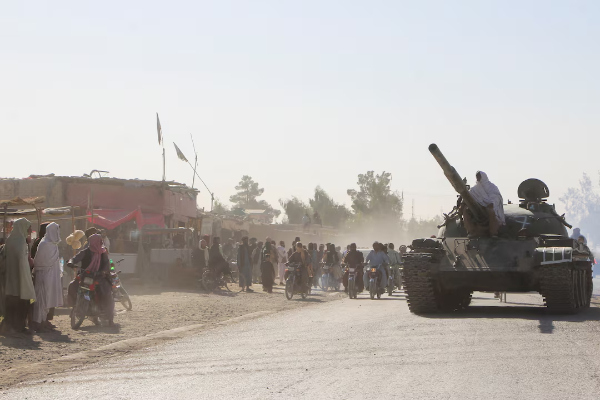
For some time, in the wake of reports that India has moved out of the Ayni airbase in Tajikistan (which it has since the bilateral agreement has expired), there was speculation that India may be seeking to move into the Soviet-era Bagram airbase 60-km from the Afghan capital Kabul.
StratNewsGlobal learns that this is not the case and India has no interest in Bagram, nor has the Taliban invited India or asked it to refurbish the base. Rather they have conceded they are in talks with the US, which is keen to get back into Bagram four years after leaving Afghanistan.
What explains the US demand and why would the Taliban even talk to them on this issue? On paper it’s about the Taliban handing back remaining two American hostages of the five it held. But as always there’s more to it.
Sitting in Kabul would enable the US to monitor developments in Iran and the Persian Gulf, keep an eye on Central Asia, not to forget China and Russia.
Officially the US claims it can help the Taliban against Iran.There are tensions with Iran over sharing of trans-boundary rivers resulting in border clashes, also Tehran’s forcible expulsion of thousands of Afghan refugees.
The US has also sought a foot in Bagram for counter-terrorism purposes. Major terrorist groups, like the Uzbeks and the Uyghurs, have had sanctuary in Taliban controlled areas of Afghanistan for years, and fought alongside Taliban cadres during the decades of civil war.
No less than Al Qaeda chief Ayman Zawahiri was killed in a US drone strike in Kabul in July 2022. Even the India-centric Lashkar-e-Tayyaba and the Jaish-e-Mohammad are present in Afghanistan, although the Taliban has said no anti-India activities on their part will be allowed.
It appears pressure on the Taliban from the US is mounting. For the former, the key issue is sovereignty: would the American presence undermine their standing in Afghanistan? What would be the size of the American footprint and what could they get up to once they are in the country?
The Taliban regime knows it is vulnerable. Apart from Russia no country recognises them. China has allowed the Taliban flag to fly in Beijing but sans diplomatic recognition. Apart from securing the Wakhan Corridor which provides access to Muslim-majority Xinjiang province, China has not shown any great interest in the country.
During the recent round of fighting with Pakistan, there was no support forthcoming from any country. In a word, they are friendless. The aerial strikes by Pakistan underscored their other vulnerability: they had no counter to attacks from the air.
Any US air campaign against Afghanistan, as Donald Trump has hinted at, could be devastating and weaken Taliban control and undermine its legitimacy. That could give new life to the anti-Taliban groups currently scattered and lying low.
This is not to say the Taliban is isolated domestically. All the ethnic groups within the Taliban stood together as fighting with Pakistan escalated. The powerful Haqqanis also stuck with the Taliban.
But the Pakistanis have Trump on their side, at least for now. Deals on cryptocurrency and critical minerals are expected to lead to further deals even for military hardware, and as history has shown, Islamabad has invariably used such hardware against neighbours.
For the US to get the Taliban to bend, it needs to reach the inner circle of advisers around Akhundzada. The buzz is it hasn’t got that far but is trying.
What if the Taliban concedes to the US, how would its rank and file react? Would that make groups like the ISKP more appealing? The Taliban is not expected to take a decision without consulting Russia. Meanwhile US pressure mounts.
Thirty eight years in journalism, widely travelled, history buff with a preference for Old Monk Rum. Current interest/focus spans China, Technology and Trade. Recent reads: Steven Colls Directorate S and Alexander Frater's Chasing the Monsoon. Netflix/Prime video junkie. Loves animal videos on Facebook. Reluctant tweeter.




